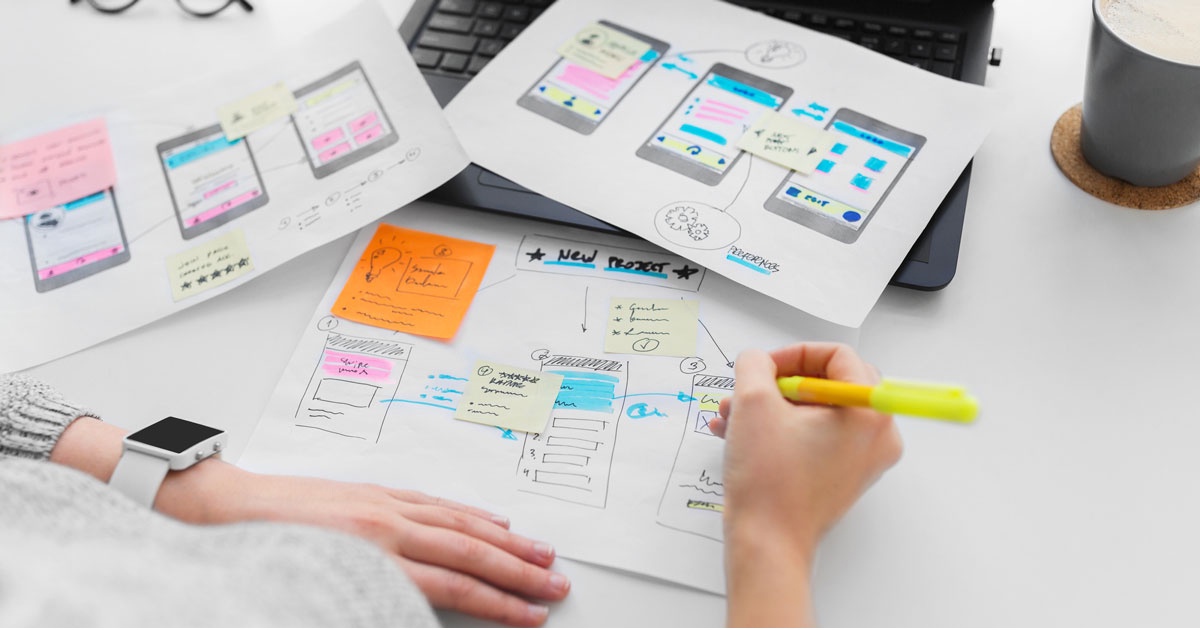While planning to design a website, we always aim to bring an enticing user experience for users to interact with the website productively and tempt them to visit the site again and again.
Eventually, sometimes we get the opposite of it. We witness users stepping back from the first page and never returning, which is an obstacle to achieving our business objectives.
Here the question arises, even though we gave our best efforts in bringing an appealing frame to the table, where was the trouble? The answer is simple. While busy working on the design process, we ignore some inevitable mistakes that lead to a surge in the website's bounce rate.
It is a matter of concern when there is a glitch in the UI/UX, as 52% of the users never want to visit the website because of poor aesthetics.
When you give a poor experience to your users, in return, you lose your business's credibility, as it describes how serious you are with your business objectives and your effort to present them before your customers.
In response to the above concern, this article will help you identify those mistakes and a few suggestions about avoiding them right from the beginning of the website design phase.
What is UI/UX Design? Why do we need it?
It is a terminology in the website design and development discipline that focuses on providing users with the best aesthetics and smoother functionality.
In simple words, UI or User Interface design refers to the aesthetic elements of the website like the screen, buttons, toggles, icons, and other visual elements that people usually interact with on a website.
UX or User Experience design refers to users' behavior and feeling after their entire interaction with the website and its elements.
For Example: While shopping, you must have come across a "shop now" button that looks distinctive from the product description.
UI takes care of the distinctive look of the "shop now" button to catch the customer's attention on the product description page and tempt them to click on it for purchasing purposes.
On the other hand, when the users click on the "shop now" button, it should redirect them to the purchase page and help them fill in the necessary information to complete the purchase.
This functionality comes into account in UX design.
It is essential to have a better, more responsive, and more efficient UI/UX design. It will boost traffic to the website, increase the term of engagement and give scope to users to convert them into leads for those businesses aiming to improve sales and revenue.
A study by Forester states that a better UI makes a 200% increment in the conversion rate while it brings a 400% increment in the conversion rate due to better UX design.
Has this figure impressed you? Are you looking to achieve the same from your website? You can do it when you are aware of the mistakes in the UI/UX design, and resolving those errors will benefit you in the long run.
Know These Common UI/UX Design Mistakes and Try Avoiding Them
1. Confusing Navigation
Navigation is a reference for the users to realize the main pages and helps them find other internal pages while exploring the website.
Ideal UI design practices suggest placing the navigation menu in the website header to catch the user's attention effortlessly. Misplacing it in a space other than the header creates confusion for the users to navigate the other pages and lets them leave the site immediately without any productive engagement.
Choosing the color to highlight the words in the menu is essential as it separates the view of the navigation menu from the other page content and helps users to identify it without pain.
Don't stuff the navigation line with unnecessary submenus until and unless it is required to place them there. Try to optimize the bar with user-understandable yet short words to explain the motive of the page to which it links.
2. Ignoring user needs or feedback
User feedback will help you find almost all the mistakes you cannot visualize while designing the website.
Users use the website from different perspectives and can notice the issues properly. Providing a feedback form will help them to share their problems and will help you recognize their mistakes in your design process.
This feedback will help you redesign the interface error-free and ensure that other users don't face the same problems in the future.
3. Irritating pop-ups on Landing Pages
Isn't it irritating when you are concentrating on a task, and suddenly due to some external interference, you lose your focus?
It does. The same concept applies when a user engages with your website's content. This issue is not limited to the home page, it can be any landing page that the user visits with a different intention, and there arises a pop-up on the screen irrelevant to it.
Let's take an example of a user who searches for a piece of information and finds it online. On visiting, the screen covers with a pop-up message showing offers to subscribe to their services. To be precise, there is no relation between the message and the user's intention of visiting the site.
It doesn't mean pop-up ads are not necessary. Pop-up Ads give updates and try to attract visitor's attention to their services. Some website forces their user to interact with their pop-ups first. After that, they will get the chance to read the content or check the services or products. These forceful pop-ups are very irritating, and your user will immediately close your website if they don't find an option to get rid of the pop-up.
So, better keep pop-ups simple and allow users to control them. Placing the pop-ups on the corner or providing a close button to close the pop-up does not divert the users from their intent. They can later choose to click on the pop-up ads if finds them relevant to their requirements.
4. Ignoring the exceptions in UX
A better and ideal UX defines the quality of experience a user gets from the site functionality without facing any exceptions using it.
On the contrary, ignoring the exceptions create interruptions for the users while achieving a goal from the website.
Let's consider the two instances to visualize the exceptions better:
- Users enter the details for registration purposes in a shopping website and log into the panel for purchasing a product. When they want to add a product to the shopping cart, they find that the "Add to Cart" button is not responding. This issue will detain them from buying the product, causing a hamper in achieving sales targets at the business end.
- let's consider another instance where the user wants to know about a product but fails to load the page due to a poor connectivity issue. The fault is on the development side, where the pages are not optimized to load quickly, even with poor internet connections.
Tracking the issues by doing end-to-end testing of various functionalities from different perspectives will help users interact with your website hassle-free.
5. Improper page formatting - color & fonts
As a user, which one should you prefer - a contrasting and colorful website with attractive typography or a website with low contrast with difficulty reading the content? Of course, the first one.
The clarity in the text format resolution is one of the prominent factors that UI/UX designers must consider, as 95% of the website consists of text only.
Font formatting distinguishes the headers, sub-headers, and content parts from each other. Choosing a simple yet appealing font with synergy in size, style, and format and implementing it gives a clear view to the users to understand a piece of information without any pain.
Color plays an equal role in distinguishing the website elements based on their functionalities and significantly contributes to making the website look better.
A good UI/UX focuses on a color scheme that should not pinch the customer's eye while using a website. It is also essential to remember that the color contrast must not harm the text visibility, or else you will lose visitors' interest in your content.
6. Forgetting to label icons
Icons are the visual elements or buttons representing a particular functionality in the website.
For example, a search button is an icon placed near a field that indicates to the users that this field is for searching purposes. Users enter their search words and click that button to get their searched content on the screen.
Some icons bear different meanings on different platforms. For example, a note icon represents tips in some places and comments in other ones. Labeling them helps users identify the purpose of the icons on the website and use them accordingly.
7. Misguiding users with links and buttons
Links or buttons should be precise with the intention when a user act on them. Misguiding the user's interest by directing them to irrelevant pages may end up losing their trust in your site.
The same concept is applicable while redirecting the broken links to pages that are relevant. When a user clicks the link, it gives them an exact piece of information or relatively similar and not beyond it.
Conclusion
It is necessary to thoroughly get into the website, list out the UI/UX mistakes, and plan to replace them with best design practices. Remember, a website will give users a frustrating and unsatisfying experience if we underestimate the UI/UX mistakes from the design end. It's better to join hands with a professional UI/UX design agency to eradicate these mistakes and bring a better experience on board, or else we will suffer from losing our users to competitors.


No comments yet